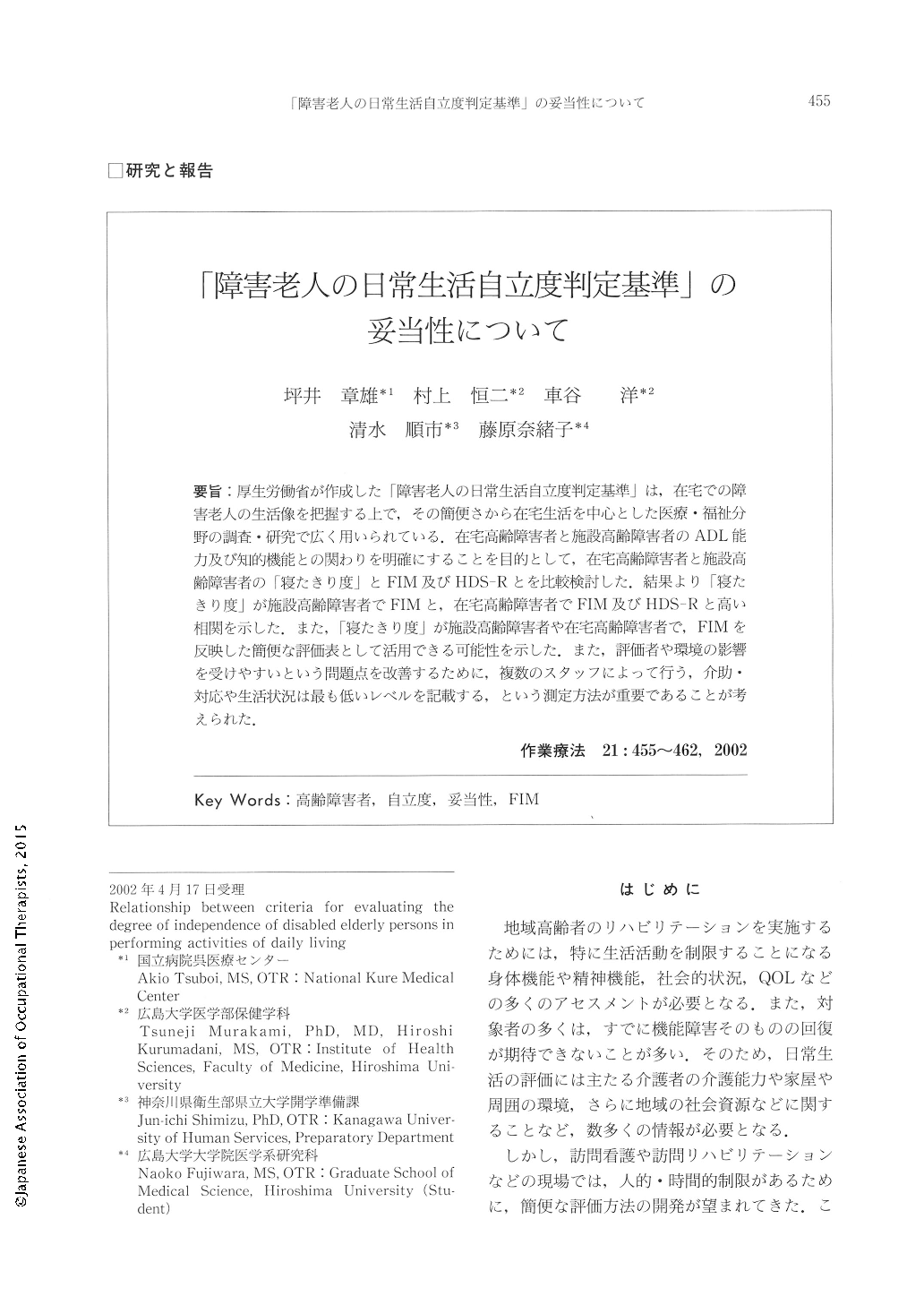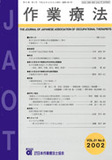Japanese
English
- 販売していません
- Abstract 文献概要
- 1ページ目 Look Inside
- 参考文献 Reference
要旨:厚生労働省が作成した「障害老人の日常生活自立度判定基準」は,在宅での障害老人の生活像を把握する上で,その簡便さから在宅生活を中心とした医療・福祉分野の調査・研究で広く用いられている.在宅高齢障害者と施設高齢障害者のADL能力及び知的機能との関わりを明確にすることを目的として,在宅高齢障害者と施設高齢障害者の「寝たきり度」とFIM及びHDS-Rとを比較検討した.結果より「寝たきり度」が施設高齢障害者でFIMと,在宅高齢障害者でFIM及びHDS-Rと高い相関を示した.また,「寝たきり度」が施設高齢障害者や在宅高齢障害者で,FIMを反映した簡便な評価表として活用できる可能性を示した.また,評価者や環境の影響を受けやすいという問題点を改善するために,複数のスタッフによって行う,介助・対応や生活状況は最も低いレベルを記載する,という測定方法が重要であることが考えられた.
"Criteria for evaluating the degree of independence of disabled elderly performing activities of daily living," compiled by the Ministry of Walfare and Labor, are often utilized for researches within medical and welfare fields. These studies focus on living-at-home care environments because, after all, it is our intention to enchance, in a positive way, patients' perception of the "home environment." Thus, this study was conducted in order to find evidence that might help us learn whether or not the criteria would aid in our understanding of abilities for performing ADL, and to help us better understand the mental faculties of disabled elderly persons in the home and in other facilities.
As a result of this study, we found close correlations between elderly persons in facilities and between the criteria and points of FIM or HDS-R on those in the home. This indicated that the criteria could possibly be easily utilized as criteria that reflect FIM for evaluating disabled elderly persons in the home and in other facilities.

Copyright © 2002, Japanese Association of Occupational Therapists. All rights reserved.


